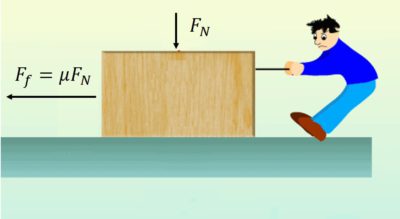I am currently working as a Postgraduate Researcher at the University of Leeds, where I am actively involved in research activities. Prior to this, I successfully completed my master's degree through the renowned Erasmus Mundus joint program, specializing in Tribology and Bachelor's degree in Mechanical Engineering from VTU in Belgaum, India. Further I handle the social media pages for Tribonet and I have my youtube channel Tribo Geek.
Coefficients of Kinetic and Static Friction
What is friction?
Friction is a force resisting relative motion and it occurs at the interface between the bodies, but also within the bodies, like in case of fluids. The concept of friction coefficient was first formulated by Leonardo da Vinci and is defined according to the following equation:
(1) ![]()
where ![]() is the friction force and
is the friction force and ![]() is the applied normal load. The magnitude of the coefficient of friction is determined by the properties of the surfaces, surroundings, surface features, presence of the lubricant, etc. A list of typical friction coefficients can be found here.
is the applied normal load. The magnitude of the coefficient of friction is determined by the properties of the surfaces, surroundings, surface features, presence of the lubricant, etc. A list of typical friction coefficients can be found here.
Static vs Kinetic Friction
Typically friction can be distinguished into static friction and kinetic friction. Static friction force ![]() is the friction force prior the initiation of motion. Kinetic friction (also known as dynamic, or sliding) force
is the friction force prior the initiation of motion. Kinetic friction (also known as dynamic, or sliding) force ![]() is the friction force developed during the motion. It should be noted that these forces are different with a following relation holding in most situations:
is the friction force developed during the motion. It should be noted that these forces are different with a following relation holding in most situations:
(2) ![]()
Correspondingly, there are two friction coefficients, static ![]() and kinetic friction
and kinetic friction ![]() coefficients.
coefficients.
Static friction coefficient is calculated according to the following equation:
(3) ![]()
Kinetic friction coefficient is calculated according to following equation:
(4) ![]()
See this introduction video regarding the static and kinetic friction forces:

Be the first to comment